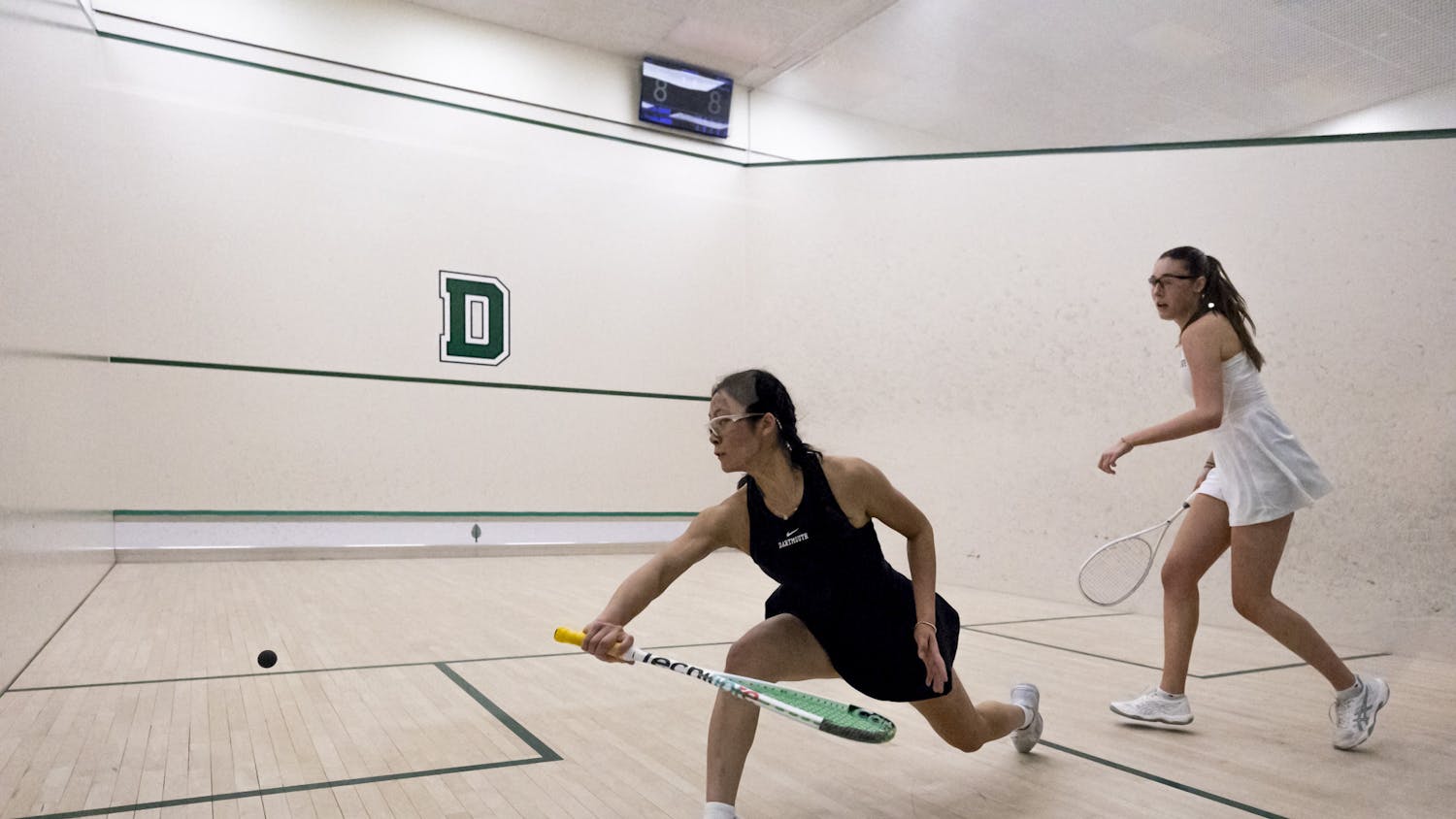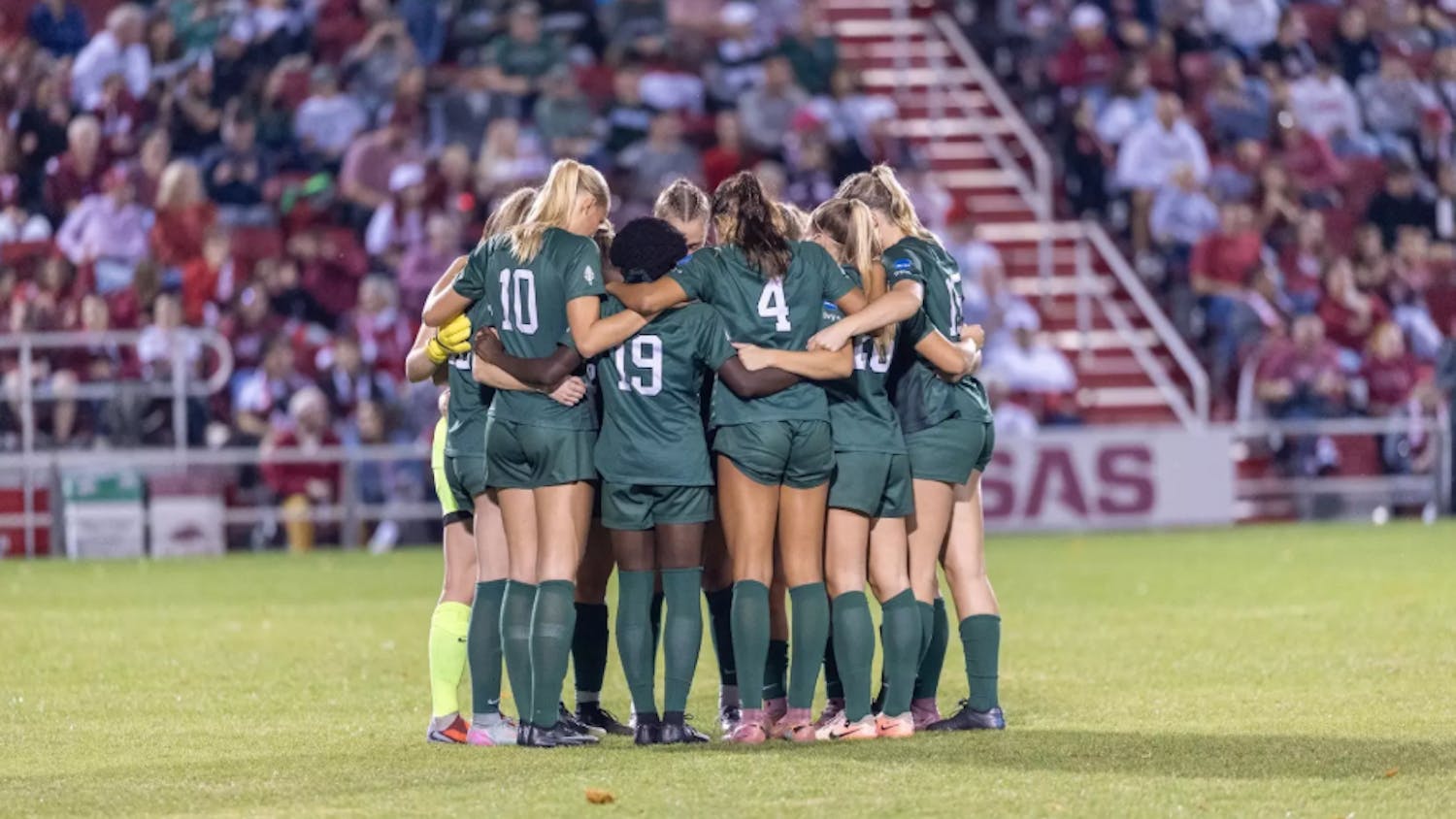Leverone is one of many athletic venues that has been renovated since College President James Wright came into office.
"After the renovation that happened five years ago, it became on of the top facilities in New England," women's track and field coach Sandy Ford-Centonze said.
In the past, due to poor planning and scheduling efforts, there were periods of time during which Leverone was unoccupied much of the day, but it is now busy from 6 a.m. or earlier until midnight or later.
Leverone usually wakes up around 6 a.m. when strength and conditioning coaches begin putting various teams through workouts.
While early wake-up times might seem tough, the teams that practice late at night are happy with the chance to use the facility but not thrilled with their time slots.
The ultimate frisbee club team practices from 9 p.m. to 11 p.m. or from 10 p.m. to 12 a.m. on Tuesdays and Thursdays, but is usually forced to split time with the rugby team on one of those days.
"It would be nice to have different times but they accommodate varsity sports over club sports. It is difficult to play at a high level that late at night," ultimate frisbee player Zack Dorner '08 said.
Scheduling coordinator Shadara MacNicol and the director of athletics facilities Cynthia Crutchfield are charged with allowing groups and teams time to use the building.
"Shadara MacNicol has been tremendous with trying to meet everyone's needs," head men's lacrosse coach Bill Wilson said of the scheduling conflicts. "Sometimes we can bump into a spot when we were originally not scheduled and we tell her when we will not be using the facilities so someone else can use our spot."
However, no amount of scheduling and cooperation between the constituents of the athletics department can offset the simple fact that there is too great a demand placed on the 110 by 80 yard space that the building protects from the New England snow and cold.
Extra stress is put on Leverone beginning Feb. 1 when official Ivy League spring sports practices begin. Spring programs, such as men's baseball, softball and the men's and women's lacrosse teams only add to the already long list of teams that want time in the field house.
During the winter indoor track season, the men's and women's track and field teams compete and train in Leverone.
During the month of January, the oval inside the track is specially configured to house the pole vaulters, high jumpers, long jumpers and triple jumpers. Once the spring sports teams are allowed to begin training, the oval is covered in turf and the jumpers and vaulters are moved to other facilities.
"Once the turf is down we have to switch over to auxiliary practice areas, and they are not as good facilities," men's track and field head coach Barry Harwick said. "The spring teams like the turf. Everything around Leverone involves compromise."
Off-season teams also use Leverone for conditioning, including the men's and women's soccer teams.
"The schedule has worked well, but I think our soccer players would like more access to the facility," men's soccer head coach Jeff Cook said. "We had our workout going and we had some recreational players on the track and some softball players on the other end of the facility."
From 8 a.m. to 2 p.m., those with a "plus" fitness membership to Dartmouth athletic facilities use the 200m track. With this type of access, the public is also able to take advantage of the of the facility's versatility.
If the coaches at Dartmouth had their way, another field house or a dome over Memorial Field would be built, as this would take the pressure off of the Leverone facility.
Other institutions, such as Boston College, have combatted space issues by erecting domes or bubbles over their football fields during the winter months. BC has their dome up from mid-November to mid-March, which helps to distribute the stresses upon their limited facilities.
"It's not the scheduling issue; there is just too much need for that facility and the real issue is finding an alternative facility for so many constituents to use. Other schools put a bubble over the outside field and it would alleviate a lot of the congestion on Leverone," Harwick said.
Crutchfield, however, does not anticipate any new building or any major changes in training facilities in the near future.
"Everyone talks about bubbles but it is not an easy task and not something that we are pursuing at the moment," Crutchfield said. "I don't think that anyone knows what the future holds. If everyone had their wishes answered, we would create these additional spaces but it is not something that we are pursuing."




